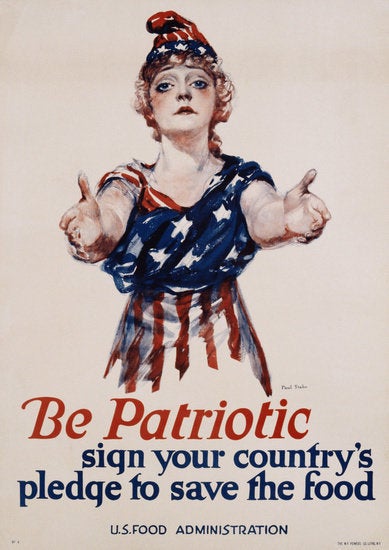
This week the Senate approved an amendment to the economic stimulus
package that strips funds for jobs in arts and culture from the House
bill. The Coburn amendment is a grave mistake. Our country's history
illustrates why.
In 1935, the Works Projects Administration established the Federal Art
Project, The Federal Music Project, The Federal Theater Project and
The Federal Writers Project and many other New Deal cultural programs.
These programs employed over 40,000 artists, hundreds of teachers, and
served over 22 million adults and children through community art
centers in 48 states. They included weekly classes in rural areas and
urban neighborhoods, theater and musical performances, concerts,
opera, film screenings, national broadcasts, local guidebooks and
stories.
Under the Art Project, an estimated 2,500 murals for hospitals,
schools and municipal buildings, 17,744 sculptures, 108,099 easel
paintings and 240,000 prints were produced, many in turn, loaned to
schools, libraries, galleries, and other institutions. Under the Music
Project, orchestras, chamber, choral and opera groups, military,
concert and dance bands offered over 5,000 performances before some
three million people each week. Under the Theater Project over 1,200
plays were produced, introducing 100 new playwrights. Under the
Writer's Project writers provided research, writing and editorial
services to government agencies, produced 3.5 million copies of 800
titles, the historic American Guide Series -- comprehensive guidebooks
for every state, Alaska, Guam, Puerto Rico and Washington, D.C and
some of the most important oral history archives and American folklore
collections we have to date.
Does it make sense to do the same thing today? Yes it does. Our
national economic stimulus package must include the arts for three
reasons.
First, the economy benefits. Arts and culture-based jobs are labor
intensive, often with little overhead required for production.
Arts-funding would go directly and primarily towards job creation and
labor, not infrastructure, bureaucracy or costly equipment. The same
does not hold true for many of the capital intensive projects
contained in the present stimulus bills. Furthermore, artists and
artisans often have little savings. They are therefore more likely to
spend what they earn directly on goods and services, funneling the
government's investment back into the economy. The same does not hold
true for bankers and businessmen who may have considerable other
income and thus may save large portions of what the government gives
them, through tax relief. Spend on the country's artists, designers,
architects and craftsmen, and they will, in turn, spend immediately
and directly on our country.
Second, the community benefits. Arts and culture programming not only
impacts a broad cross section of our country, it sustains and builds
that cross section, enabling individuals to listen, reflect and speak
to others in society through poetic and personal languages. There are
exemplary cultural programs and artworks that provide financial
opportunity and visibility for diverse communities, and others that
provide inspiration and solace often when hardship is most acute. Just
consider the:
-Jazz artists and musicians across the nation who worked relentlessly
in the wake of Hurricane Katrina to raise funds and awareness for its
survivors
-American quilt-making traditions such as the quilts made by the Women
of Gee's Bend ("some of the most miraculous works of modern art
America has produced." The New York Times) or the 40,000 individuals
across the country contributing to the AIDS memorial quilt
-Innovative national and local arts education programs, such as
SMARTArt's integrated media literacy, arts, and technology curriculum;
Jacques D'Amboise's National Dance Institute serving public school
children in low-income communities; or the Lincoln Center Initiative,
among others. These efforts promote immersive learning, discipline,
imagination and creative problem-solving
-0.5% for arts in federal buildings and public arts programming for
our subways, train stations and airports, continuing the tradition of
the New Deal public murals
-Philadelphia Museum of Art's "Cezanne" Exhibit (1996), generating
$86.5 Million in city revenues in just 14 weeks with nearly 60% of its
visitors from out of state, or Boston's Museum of Fine Arts
responsible for $369 Million of additional spending by visitors to the
region
Successful arts-based initiatives and artworks engage people in
critical exchanges every day. Sometimes these efforts mean learning,
sometimes community pride, sometimes urban renewal. Often they produce
empathy, insight and new resources that connect individuals from
different backgrounds and communities with each other. This kind of
awareness, imagination, and personal conviction are what lay the
groundwork for increased civic engagement.
Third, the future benefits. Alongside the Golden Gate Bridge, the
Shasta Dam, and other construction begun in the 1930s, remains an
equally important American cultural legacy created by thousands of
artists: artists who include Ralph Ellison, Saul Bellow, James Agee,
Walker Evans, Zora Neale Hurston, Orson Welles, Philip Guston, Jackson
Pollock, and Mark Rothko (all participants in the federal arts
programs). Unlike roads, bridges and dams, these pieces cost little
to maintain. An artwork once produced requires little further
injection of government funds. Instead, the New Deal-era artworks
continue to give back to future generations. Our children and our
children's children are still able to enjoy the fruits of this
one-time investment.
Investing in our nation's culture makes strong financial sense and
will leave a lasting legacy far beyond the current crisis.